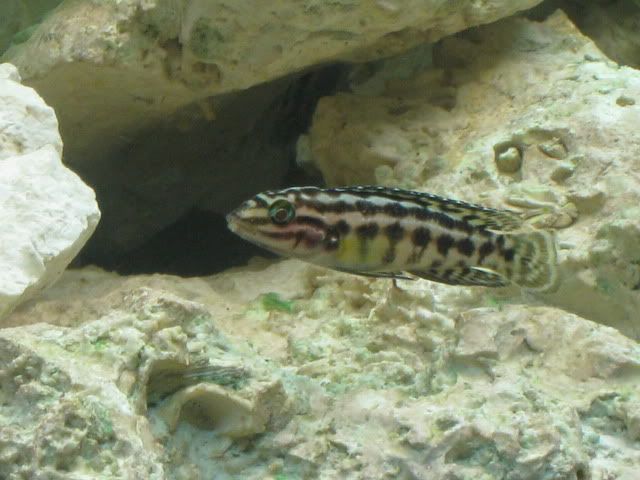Good thing, but I do not believe pumilus and Julidochromis ever have seen eachother in the lake. As far as I know, pumilus is not really found _in_ the lake, but in the surrounding waterways. Still, it might be the best choice as for the waterparameters. It does really well in harder water, normanni thrives in more acidic conditions, at least in my tanks. Other people might have a different opinion on this, maybe due to different populations of normanni.
There´s another species wich you might try, if you want lampeyes: Micropanchax scheeli. Gets a little bigger than normanni, wich might be better with the company of Julidochromis. normanni is the easiest species to find though, I believe.
If you are having trouble to find pumilus, I will soon make some efforts to breed them again, so in six months or so, I hope to have quite a number of these fish. You will have to visit Malmo to get them, but I would be happy to see the fish kept by a lot of aquarists. As far as I know it almost disappeared in Scandinavia a couple of years ago, when a Danish fishbreeder stopped keeping them. Me and some friends were lucky enough to find them in Germany, and we have had some success in breeding them (my friends have much better results than I have). They are sensitive to temperature in relation to sexratio, the population we have here in Scania it seems best to breed them in slightly colder water, around 22-23 C. Gives a fairly equal sexratio.
Hilsen,
/P
There´s another species wich you might try, if you want lampeyes: Micropanchax scheeli. Gets a little bigger than normanni, wich might be better with the company of Julidochromis. normanni is the easiest species to find though, I believe.
If you are having trouble to find pumilus, I will soon make some efforts to breed them again, so in six months or so, I hope to have quite a number of these fish. You will have to visit Malmo to get them, but I would be happy to see the fish kept by a lot of aquarists. As far as I know it almost disappeared in Scandinavia a couple of years ago, when a Danish fishbreeder stopped keeping them. Me and some friends were lucky enough to find them in Germany, and we have had some success in breeding them (my friends have much better results than I have). They are sensitive to temperature in relation to sexratio, the population we have here in Scania it seems best to breed them in slightly colder water, around 22-23 C. Gives a fairly equal sexratio.
Hilsen,
/P












Kommentar